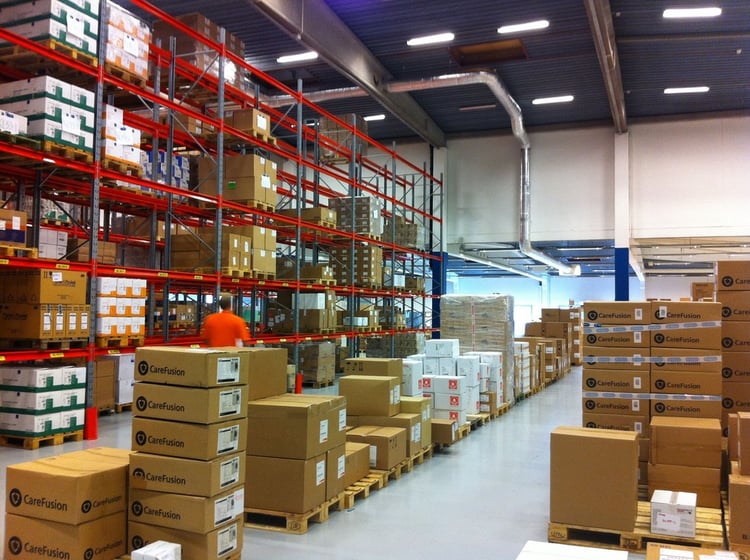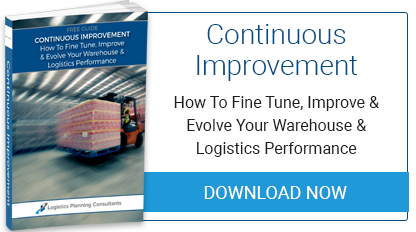
Warehouse processes have a habit of growing over time. New procedures, layouts and technologies are implemented to handle particular processes or in response to specific problems and tend to remain in place – often long after they have served their purpose. The long-term effect of this is a gradual loss of productivity as duplication and physical warehouse processes take up a growing proportion of your team’s time. When this happens, a new way of measuring and analysing your warehouse performance is called for.
The following five tips can help you apply a strategic approach to productivity; utilising your strengths and empowering you to improve on your weaknesses.
1) Implement An Effective WMS
If you have not done so already, consider investing in a good Warehouse Management System. There are many different WMS applications available, so the option you choose depends on your type of business and budget. There are two main WMS purchase options: You could acquire a product licence, involving a one-time purchase with an optional ongoing support fee; or you could choose a Software as a Service (SaaS) subscription package. Licensed software is the traditional way of buying a WMS. This usually gives you greater flexibility to customise your application and fine tune it to focus on the areas in which you need to improve productivity. However, a growing number of warehouse businesses are choosing the SaaS option for the faster implementation time and lower setup costs.
The important factor to consider when looking into any WMS or improvement strategy is long term ROI. Upfront costs are not the be all and end all. Think about the options that are likely to give you the best returns over the next 5 to 10 years.
2) Optimise Your Warehouse Layout According To Your Stock Requirements
The physical process of picking and packing goods will take up a large proportion of your operator resource in the warehouse. You can save a lot of time and money by optimising your layout to match the type of product handled and streamline your material flows. Take a look at the journeys your team need to make when picking and fulfilling orders, right down to precise timings and the number of steps involved. Are there any journeys that criss-cross each other needlessly? Seek out a warehouse layout that minimises the number of steps in each product or order journey that you make.
3) Regularly Review Warehouse Procedures
Measure everything you do in the warehouse and link this to a Continuous Improvement Plan. Set up business goals and timeframes with tasks for designated individuals to improve accountability. Analyse your progress at regular intervals, review what you’ve done right and what you could change. Based on the effectiveness of your plan, you may wish to adjust your warehouse procedures or consider making other changes.
4) Invest In New Warehouse Technologies
The last few years have seen a flood of new warehouse technologies which have great potential to save time and increase productivity. Increased automation systems are the most visible of these innovations, but arguably it is voice enabling technology that has made the most impact on productivity. You can apply voice enabling to any process and function in your warehouse. Most systems can be installed as standalone products and do not require you to change your WMS or invest in additional IT infrastructure. There are many different applications to choose from, so get in touch for advice about the right system for you. If you choose correctly, the time savings alone could yield a positive ROI within six months.
5) Invest In Your Team
Your warehouse staff are crucial to making any productivity improvement plan work. A good WMS will make it easier for you to monitor staff and manage them based on achievable KPIs, but this is just the start. You can’t increase long-term motivation by just using the stick; you have to offer the carrot as well. Warehouse staff become understandably nervous by some improvement strategies, worrying that a change in shift pattern will bring a reduction in pay, or that automation may result in redundancies.
Give your team a stake in improving productivity by offering a pay bonus or incentive scheme linked to target achievement. This ensures that the most hard-working members of staff are rewarded and lets everyone know that your company recognises success. You should also ensure your team are listened to. Seek out their feedback on any new scheme, consult them before making any changes and invite their input on proposed productivity strategies. This should be backed up by regular training and advancement opportunities. Remember that a well-trained, flexible workforce will give you greater freedom when adjusting to the challenges of the future.
Continuous Improvement: The Key to Effective Warehouse Management
At LPC we’ve been helping customers improve their warehouse productivity, re-engineer their facilities and incorporate new technologies into their supply chain for over 30 years. In most cases this comes not from a grand overhaul of your working practices, but from a strategy of continuous improvement; implemented over time with a positive feedback loop.
More information about this long-term, strategic approach can be found in our new e-book: Continuous Improvement; How to Fine Tune, Improve & Evolve Your Warehouse & Logistics Performance. Click here to download a free copy from our website.


